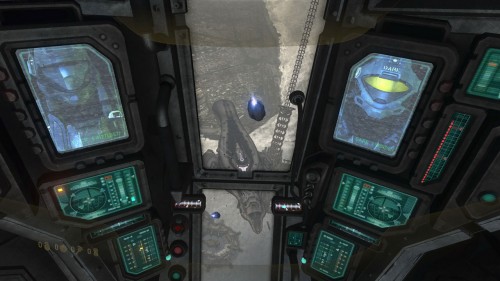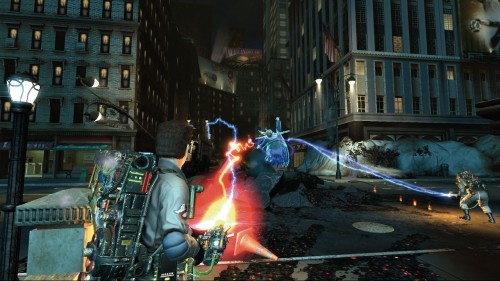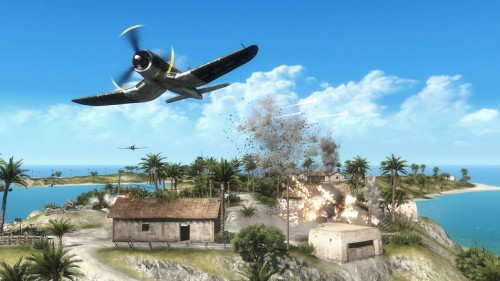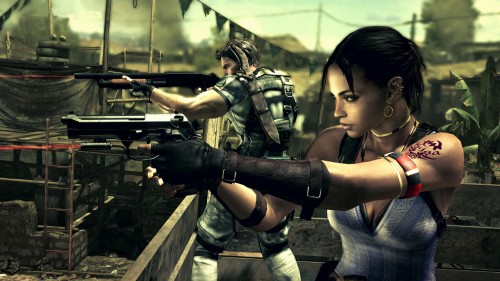If I begin in the same way that almost any review of Halo 3: ODST that I’ve seen ends, the game is great because it’s Halo. It has the same tight gameplay, the same great weapon balance, the same great storyline. It’s essentially an expansion to Halo 3, so it stands to reason that it shares most of the game’s good qualities. Firefight is also a fine addition, shamelessly copying Gears 2’s Horde mode but, in my opinion at least, improving it with Halo’s slicker, more precise gameplay and extra enemy variety.
Just in case I get carried away over the next few paragraphs and leave you with the impression that I dislike the game, though, let me just say that it’s great. Worth full price? I’m always hesitant to mark a game down based on value – five good hours better than ten stretched out average ones and all that – and on that basis I’d still encourage people to buy it.

But regardless of value, this is presented as an expansion of sorts – it’s Halo 3: ODST and not Halo: ODST, remember – and so hurts for being a modest upgrade of a two-year-old game that wasn’t technically mind-blowing when it came out anyway. It’s been improved, certainly, because the derelict New Mombasa streets are far more atmospheric than anything that I can remember in Halo 3 proper, and the engine also seems to throw more enemies than the 2007 model could handle, but compared to the obvious stuff like Killzone 2 – think the urban environments of that game’s second and third stages – and even the cities of Gears of War, it’s showing its age. There’s little more than the occasional identikit building to slip through, and the architecture looks pretty solid for having been essentially nuked hours before the game. I barely even recall a pile of rubble.
Hell, after a Covenant invasion and occupation you’d expect to at least see some sign of carnage. There’s not so much as a civilian body to be found, though. New Mombasa doesn’t feel lived in, which was understandable when we first visited in Halo 2 but much harder to justify now.
The story is also something that I feel needs looking at. Not the content of it, because I still thoroughly enjoy the Halo universe, but the method in which it’s told. BioShock-style audio diaries are in here, but they’re more like the parts of a radio drama than an individual’s stolen moments, making the implementation seem like a heavy-handed knockoff. Some of the cut-scenes are almost painful to watch in a ‘new’ game as well, with unimpressive character models going through stilted animations while the cast is left with clichéd, throwaway dialogue. This ODST squad ain’t exactly Aliens’ colonial marines, not matter how much they want to be…
It’s difficult to pick at the flaws of the flashback storytelling without spoiling things, so I’ll be brief, but that doesn’t make too much sense either. The first is triggered by an ODST’s helmet embedded in a small room overlooking a courtyard; when you’ve played through the resulting sequence, see if you can explain (a) how the helmet got there and (b) how the Rookie – who, incidentally, has been weakened in some areas compared to the Chief but still seems able to operate a Spartan Laser or effortlessly flip a Warthog, and doesn’t really seem too disadvantaged when single-handedly taking on squads of Covenant – was able to piece together that much information. Similar questions are raised throughout, and it doesn’t seem to stand up to dramatic scrutiny.
But like I said, despite a potential laundry list of complaints, ODST is still a great game to play, and I’ll stand by its value when you get £20-odd worth of Halo 3 maps thrown in for less than £30. It’s just not quite up there with Gears of War, Halo 3 and Gears 2 as Microsoft’s headline acts for the last three years. Let’s hope that Bungie’s really getting its hands dirty with Halo: Reach.



